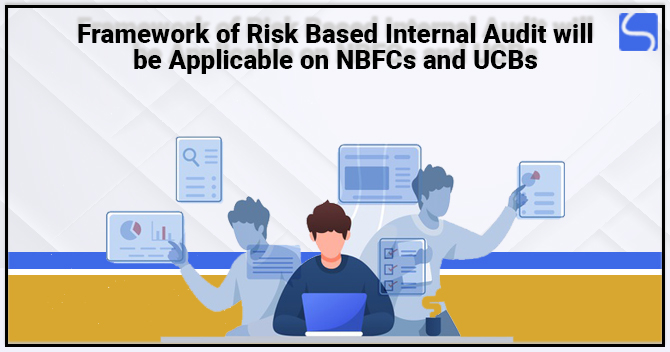What is the History of NBFCs? – Overview

Karan Singh | Updated: Jan 29, 2021 | Category: NBFC
Today, NBFCs are rising very fast as an integral part of the Indian Financial System, but when you look back at the history of NBFCs, they have started at a very low level and on a limited scale without making an effect on the financial sector. An NBFC or Non-Banking Financial Company doesn’t have any banking license, but they provide bank-related financial facilities such as investment, market brokering, and risk pooling. If any registered company (Private or Public Limited Company) want to start an NBFC in India, then they must apply for the NBFC Registration because without the NBFC Registration nobody can establish a Non-Banking Financial Company in India. This financial institution plays an essential role in strengthening the economy and having been able to pick up a place for themselves to meet the credits needs of both the retail customers and wholesale. In this blog, we will discuss the history of NBFCs in India.
Table of Contents
What is the Role of NBFC in the Financial System?
Following is the list of the important role of NBFC in the Financial Systems in India:
- Non-Banking Financial Company acts as an enhancement to banks by providing infrastructure to distribute extra resources to companies and individuals with insufficiencies.
- From credit and loans facilities to retirement planning and private education funding, from dealing in money markets to supporting stocks, shares and Term Finance. Non-Banking Financial Companies provide almost all banking services, and they also provide wealth management facilities such as shares portfolios, managing stocks, discounting services such as discounting of instruments and given advice on merger and acquisition activities.
- Non-Banking Financial Companies do not offer cheque books or passbooks, nor do they provide a current and saving account. They are only authorized to takes fixed deposits.
- Non-Banking Financial Companies are generally not all certified to take deposits from the public, and they have to find other options for funding their operations.
- This financial company also provide some competition in financial related services in India.
- The huge number of Non-Banking Financial Companies has rapidly increased in the last few years because venture capital companies, industrial companies, and retail companies have entered the lending business. This financial company also support property investments in property further preparing possibility, industry or market studies for companies.
A Brief History of NBFCs in India
From below you can check a brief history of NBFCs in India and how NBFC evolved time to time in India:
- In the 1960s, NBFC started as an alternative for investors and savers whose financial needs were not satisfactorily met by the existing banking system. They have invested in fixed deposits from investors and come out renting deals for big industry firms in India.
- At the initial stage of development, the Companies Act synchronized financing. But at that time, a necessity was felt because of the distinctive and multipart nature of operations and also financial companies acting as financial intermediaries, and there must be a distinct regulatory mechanism.
- As per the Chapter, III B was built-in in the Reserve bank of India Act, 1934, allocating limited authorities to the Bank to regulate deposit-taking companies. The Reserve Bank of India has since commenced measures to bring the NBFC sector within the jurisdiction of its regulation.
- When we look back to the history of NBFCs, in 1975 the Reserve Bank of India accepted and implemented the “Key Recommendations of James S. Raj Study Group” shaped that financial establishments were permitted to gearing oftentimes. According to the significant features of the Directions, the hire purchases and leasing companies could accept deposits to the level of their NOFs or Net Owned Funds. The directions have also required the Companies to maintain liquid assets in the form of creative approved Government Authorities.
- In the 1980s and 1990s, Non-Banking Financial Companies reached to a new level and started to attract an enormous amount of investors owing to their customer’s friendly reputation. Since the days of LPG started in 1991 (Liberation, Privatization and Globalization) there has been a rapidly increasing growth of Non-Banking Financial Companies; the number of Non-Banking Financial Companies raised from Seven thousand in 1981 to around thirty thousand in 1992. This happens when the Reserve Bank of India felt that it was becoming rapidly increasing tedious for it to regulate the industry. In 1992, the Reserve Bank of India formed a committee regulated by A.C. Shah, former Chairman of the Bank of Baroda, to recommend measures for the effective regulation of the industry. The Committee of Shah gave its recommendations, which ranged from mandatory registration to provident norms.
- On January 1997, the RBI Act, 1934[1] was drastically changed especially the ChapterIII-B, C, and V of the RBI Act with the fundamental objective of putting in place a complete regulatory and supervisory structure which aimed at protecting the interests of depositors and ensuring the strong functioning of NBFCs.
- In the History of NBFCs, the Non-Banking Financial Companies have evolved significantly in terms of operations, a variety of market products and instruments, technological difficulty, etc.
- In the last twenty years, the Non-Banking Financial Companies have gained much importance by adding depth to the total financial sector. Growing of Non-Banking Financial Companies as an important player in broadening the financial base of India, it generates paramount academic and research interests to investigate deeply into its performance, growth. In 2016, the Union Cabinet gave permission for FDI (Foreign Direct Investment) under the automatic route in regulated Non-Banking Financial Companies.
Conclusion
From above, it is cleared that the history of NBFCs in India tells us how they become more successful than Banks. Non-Banking Financial Companies plays an essential role in the process of intermediation, especially in the areas where the commenced financial companies are not active or available for a borrower. The diffusion of Non-Banking Financial Companies in rural areas of the country has fortified small investors to invest their money and even borrow it when needed. If you want to know more information regarding NBFC Registration, Company Registration, then you can contact Swarit Advisors, they will properly assist you.
Also, Read: Cancellation or Surrender of NBFC Registration















